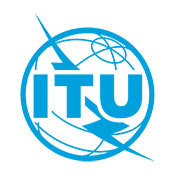Episode #13: Architecting the Web of Things

This webinar was part of ITU’s webinar series on Digital transformation for cities and communities.
Episode 13 was organized by the International Telecommunication Union (ITU) and was coordinated with the Web of Things WG of the World Wide Web Consortium (W3C).
The Web of Things (WoT) is an emerging concept that aims to enable interoperability among Internet of Thing (IoT) platforms and applications. By using standardized web technologies and architecture, WoT has significant potential to boost the effectiveness of IoT platforms and applications across sectors. This webinar examined the nature of WoT and its potential in smart city applications in particular. It looked at the building blocks and architectural aspects that describe the key feature and functions of WoT. This unique webinar was joined by WoT experts who shared their experience in implementing WoT and used cases that highlight its applicability in the smart city and IoT contexts.
Note: The views and opinions expressed by the presenters during this event are solely those of the individual speakers and do not necessarily represent, reflect, or constitute the official stance, policy, or position of the International Telecommunication Union (ITU) or its secretariat.
Programme
15:00 – 15:05
Opening remarks
- Chaesub Lee, Director, Telecommunication Standardization Bureau, ITU
15:05 – 16:55
Session 1: The Web of Things for Smart Sustainable Cities
Interoperability is the foundation of a smart sustainable city. It enables the seamless integration of IoT and other digital applications and services. This session will explore the unique features of the Web of Things, discuss how WoT may solve the interoperability challenge, and discuss their potential to contribute to adopting a standard-based approach to smart sustainable cities.
Moderator: Ramy Ahmed Fathy, Vice-chairman, ITU-T Study Group 20, ITU, Director, Digital Services Planning and Risk Assessment, National Telecom Regulatory Authority, Egypt
- Gyu Myoung Lee, Professor, Liverpool John Moores University (LJMU) and Q4/20 Rapporteur [Presentation]
- Michael McCool, Co-chair, W3C Web of Things [Presentation]
- Kazuyuki Ashimura, Project Professsor, Keio University and W3C Web of Things Team Contact [Presentation]
- Sebastian Kaebisch, Co-chair, W3C Web of Things [Presentation]
- Long Rong, China Mobile [Presentation]
Questions & Answers
16:55 – 17:00
Closing remarks
- Nasser Al Marzouqi, Chairman of ITU-T Study Group 20

